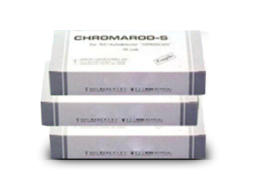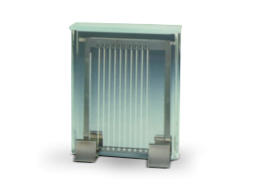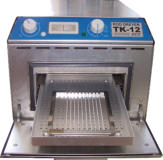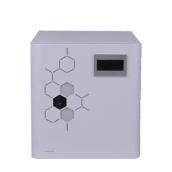










© 2022 - IATROSCAN.EU - All Rights Reserved
SES GmbH - Analytical Systems - Friedhofstr. 7-9 - 55234 Bechenheim Germany
+49(0)67361301
ACCESSORIES
semi automated Spotter SES-3202
SES Model 3202 Spotter for TLC/FID techniques is a precision
instrument specially developed for applying sample solutions
onto the sintered silica gel surface of a Chromarod. The smaller
and more concentrated the sample spot, so better the
resolution obtained after development of the Chromarod in a
Development Tank DT-150 (3201).
The reproducibility of quantitative and qualitative analyses with
the IATROSCAN is closely related to the accurate application of
a known quantity of sample onto the surface of a Chromarod in
the form of a micro spot.
With the "Autospotter" it is possible to apply between 0.020 and
10 micro liters of sample solution. The spotting is electronically
controlled through a small external microprocessor module,
with a precision of better than 0.5 %.
SES HYDROGEN GENERATOR
Our Hydrogen Generators are a tried and trusted
alternative to high pressure gas cylinders.
ACCESSORIES AND CONSUMABLES:

CHROMARODS
Developed exclusively for the IATROSCAN, is a thin
layer in the form of thin layer in the form of thin quartz
rod evenly applied and sintered inorganic binder and
absorbent on it.

DEVELOPMENT TANK
After the sample is spotted on the Chromarods with
the SES-A-4500 Autospotter, the Chromarods are
placed in the Development tank for separation by
solvent mixtures.
CHROMAROD DRYER
The oven is used to dry rods before applying
samples and to evaporate the mobile phase from
the rods after development before scanning. This
accessory is highly recommended for correct
results.
CHROMAROD VIEWER
With our Chromarod Viewer you will be able to
evaluate the right timing for the development of the
Chromarods in the mobile phase of the analysis.










